Some trends just make sense. Consider the fact that ponytail palms are popping up in more and more places as bonsai.
One look at their eye-catching trunks that resemble the leg of an elephant and their elegant strap-like leaves, and it’s no wonder people want to capture the spirit of this unique plant with the art of bonsai.
Unlike many bonsai, which can only grow outside, this beauty can grow indoors full-time if you prefer, plus it grows slowly. It doesn’t need a ton of light and thrives in indirect lighting.
It’s also extremely drought tolerant, which is perfect if you have bonsai dreams but you aren’t exactly reliable when it comes to watering.
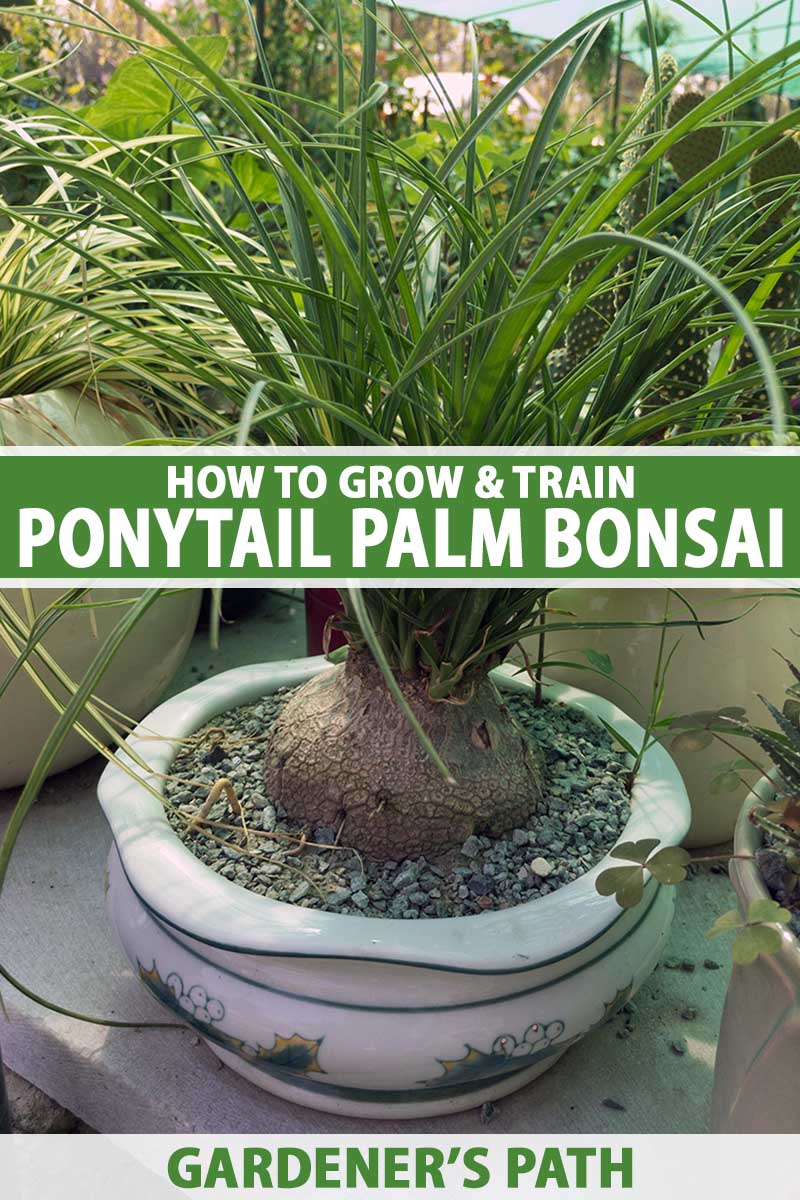
We link to vendors to help you find relevant products. If you buy from one of our links, we may earn a commission.
This plant is easily identifiable. Just look for the big, bulbous base, scaly gray trunk, and stringy foliage. When combined with a simple bonsai container, it creates a visual statement that is sure to start a conversation.
Up ahead, we’ll go over caring for and shaping these little beauties. Here’s what to expect:
What You’ll Learn
Whether you brought a pre-made ponytail palm bonsai home or you’re hoping to train one of your own, this guide can help, so let’s get started.
What Is a Ponytail Palm Bonsai?
Settle in, because things are about to get a bit confusing.
Surprise! To start, ponytail palms (Beaucarnea spp.) aren’t actually palms at all.
Genetically, they have been classified in a number of different ways. At one time, they were put in the same family as lilies (Liliaceae). They were also classified originally as part of the Nolinaceae (formerly Agavaceae) family.
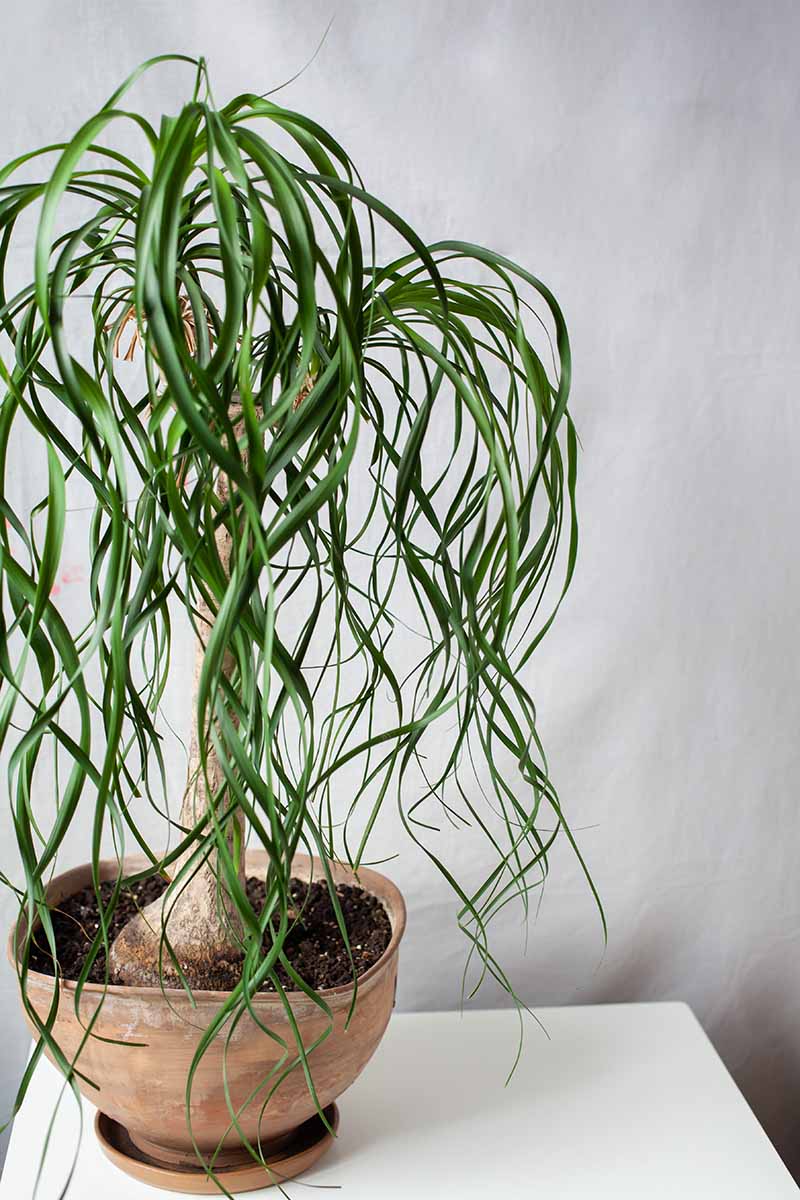
Today, they have been reclassified as part of the asparagus family (Asparagaceae) and part of the Nolinoideae subfamily after new genetic research was complete.
Yep, this palm-resembling plant is actually a relative of those green shoots you gnaw on in the spring. It’s also related to agave and hostas.
As if that wasn’t enough, you’ll sometimes see them (inaccurately) referred to as species of Nolina as well.
Despite the classification chaos, once you know what to look for, ponytail palms are easy to identify visually.
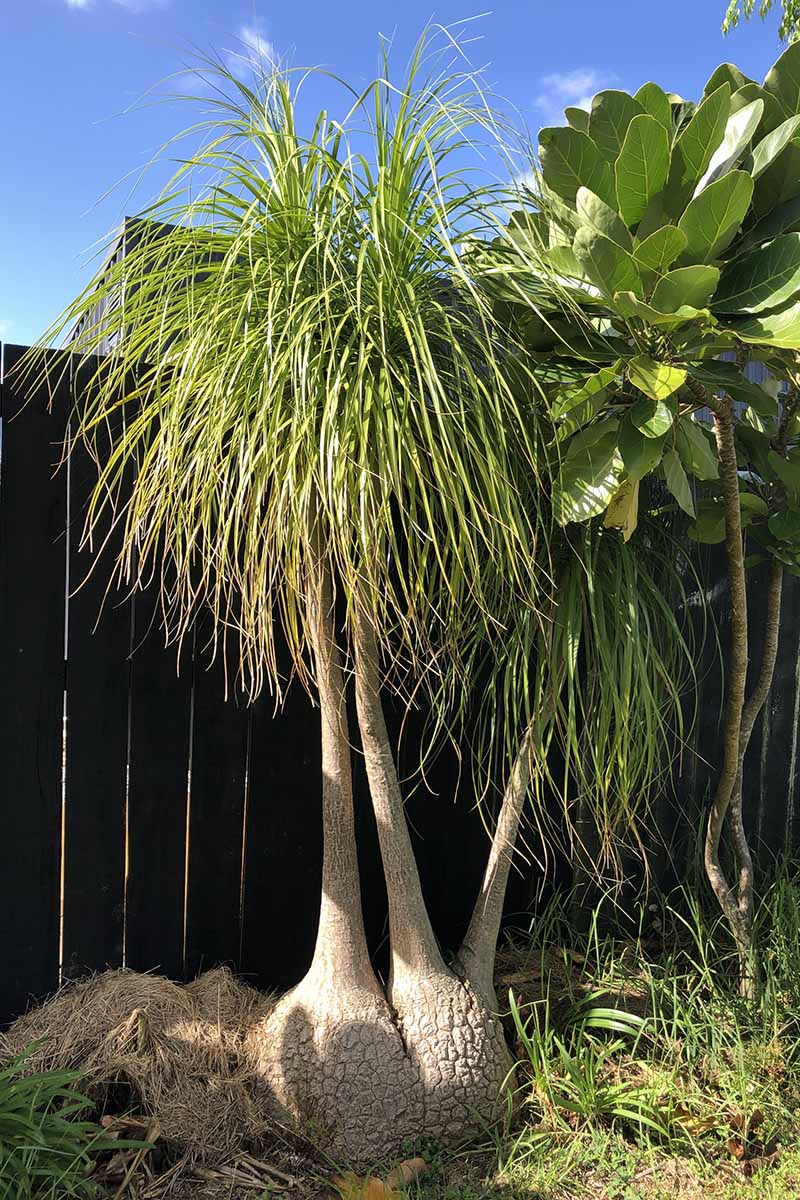
That bulbous base and crop of strap-like foliage on top is pretty unique. That’s why some people describe it as the plant version of a boisterous water fountain.
So why does this plant grow in such an unusual shape? That bulbous base (called a globose caudex) is actually a clever adaptation to help the plant survive in dry climates.
This base stays fairly petite when the succulent is grown as a bonsai, but in its natural habitat, it can become extremely exaggerated.
As the bulbous base ages, it turns gray and can develop cracks, which is why these plants are often called elephant foot trees.

The caudex acts like a canteen for the plant, storing water up for the lean times.
The evergreen leaves appear smooth, but if you look at them through a magnifying glass, they are very finely serrated.
The leaves can be straight or curved, or they can twist and curl. Each leaf can reach up to 36 inches long. As they age, the leaves will turn dry and yellow or brown.
When these plants are happy and grown in ideal conditions, they’ll form panicles featuring pale pink, dark pink, white, or cream-colored flowers. Female plants will also produce seeds. But this rarely happens indoors.
In their native habitat in the semi-desert areas of Mexico, Belize, and Guatemala, they will grow up to 30 feet tall, though they usually stay smaller. This succulent has become a popular houseplant because it is so hardy and tolerant.
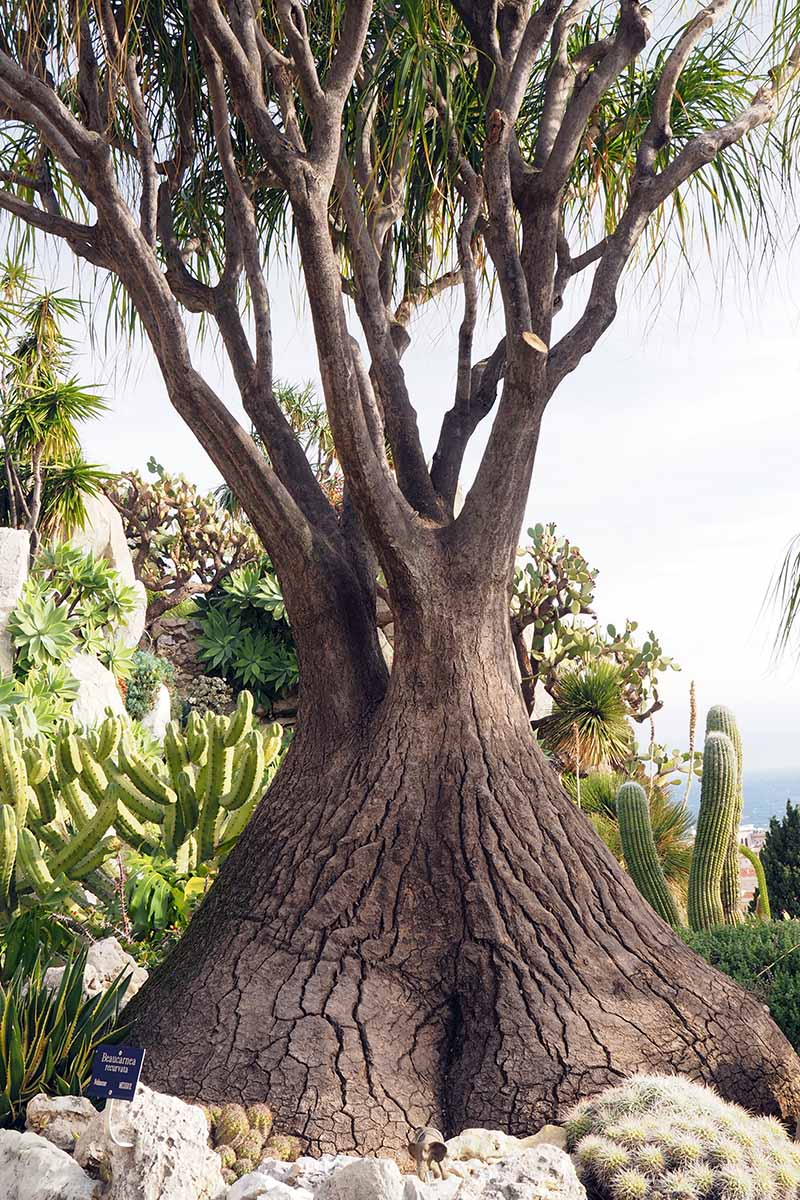
In a bonsai container, they stay nice and compact without much work, which is another reason why they make fantastic bonsai specimens. They don’t suffer when their roots are restricted, and they grow nice and slow.
A majority of species grown as bonsai need to be kept outside year-round, but not elephant foot. Not only can you keep it indoors all year long, but it even does well in the dry heat found in the typical winter environment of most homes.
In fact, if you want this succulent to be really happy, keep it in a dry, warm, sunny spot and just let it be. If you live in USDA Hardiness Zones 9 to 11, you can keep the plant outdoors for part or all of the year if you want.
You can learn more about growing and caring for ponytail palm indoors in our guide.
Planting
You can often purchase this plant ready-to-go at nurseries and bonsai specialty stores. Home Depot even carries a pre-trained, potted six-year-old specimen with an included humidity tray.
Ponytail Palm Bonsai with Humidity Tray
If you go this route, you don’t need to do anything initially other than feeding and watering.
The exception to this is if you purchase a pre-potted bonsai that has rocks or moss glued to the surface of the soil.
You need to get rid of that stuff, so you should remove the plant from its container, brush away all of the soil and glued-on material, and repot it with fresh potting substrate.
If you purchase or otherwise obtain a young transplant, you’ll need to do a little work to shape it up for placement in its new home.
First, remove the whole thing from its growing pot and brush or rinse away all of the soil.
Untangle the root ball as much as you can. Use a pair of scissors to trim away any dead or mushy roots. Then, continue to trim the smaller roots until the root ball will fit comfortably in its new container.
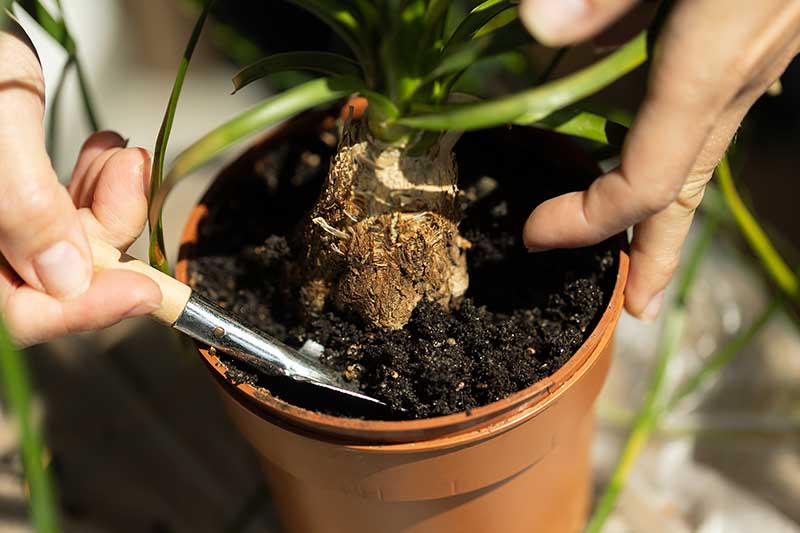
Place a screen over the drainage holes in the container to prevent the substrate from washing out, or clogging those super-important holes.
Because ponytail palms are semi-tropical succulents, you’ll want to use a potting substrate that is made for those types of plants. These generally contain more sand and don’t retain as much water as standard substrates.
You can purchase a pre-made mix at Bonsai Boy in a two-pound bag.
Place a thin layer of potting substrate in the bottom of the container, and put the plant in place. Fill in around the roots with more substrate and water to settle everything into place.
Shaping
If you decide to begin with your own young start, you can have a hand in shaping your ponytail palm.
You can pick up a young plant in a five-and-a-half-inch pot at Home Depot.
Plants under six inches in diameter can be chopped off to encourage branching. Snip the plant during the dormant season and it will grow two, three, or four new heads.
Then, you can chop the new trunks and they will branch yet again. It takes a few months for the new sprouts to emerge, but be patient. They will come, so long as your ponytail palm is kept healthy.
In the wild, older plants will eventually branch naturally on their own, but this is rare – though not unheard of – in bonsai. To encourage the bushy form it takes in the wild, you might want to form multiple branches using this technique.

To prune back the trunk, use a large pair of secateurs or bypass pruners to sever the trunk at the desired height, taking care to leave at least six inches of the trunk in place.
To prune the green shoots, use a pair of secateurs and snip the shoots at the desired height.
Once you’ve achieved the desired shape, all you need to do is remove any dead, diseased, or unattractive leaves, using a pair of scissors.
Care
In the winter in their native habitat, these plants receive very little water. Reproduce this by limiting the amount of water you give them during the winter. The soil should completely dry out for several days in between watering.
In the spring, summer, and fall, let the soil just dry out before adding more moisture.
Fertilize in the spring with a slow-release bonsai fertilizer. Bonsai Boy carries a four-ounce bag of pellets that slowly release food into the soil over time.
Slow Release Fertilizer Pellets
Use care not to over-fertilize this plant because it is sensitive to salt.
If you find the leaf tips turning brown, you are likely either overwatering or underwatering. Try adjusting how much water you give the plant, keeping in mind that overwatering is usually the problem.
This succulent can actually go for weeks without water if the temperatures aren’t extremely hot or the air extremely dry.
Your plant will do best if you place it in a sunny window with southern exposure, but it can survive in an area with bright, indirect light for the majority of the day.
Gently tug away any dry yellow or brown leaves. New ones will pop up in their place.
Species and Cultivars to Select
There are several species, cultivars, and forms that make lovely bonsai.
B. recurvata, whose leaves are long and curved back, is the most common variety that you’ll find for sale in stores. The leaves of B. guatemalensis are twisted and narrow. B. gracilis. has gracefully curved, long, narrow leaves.
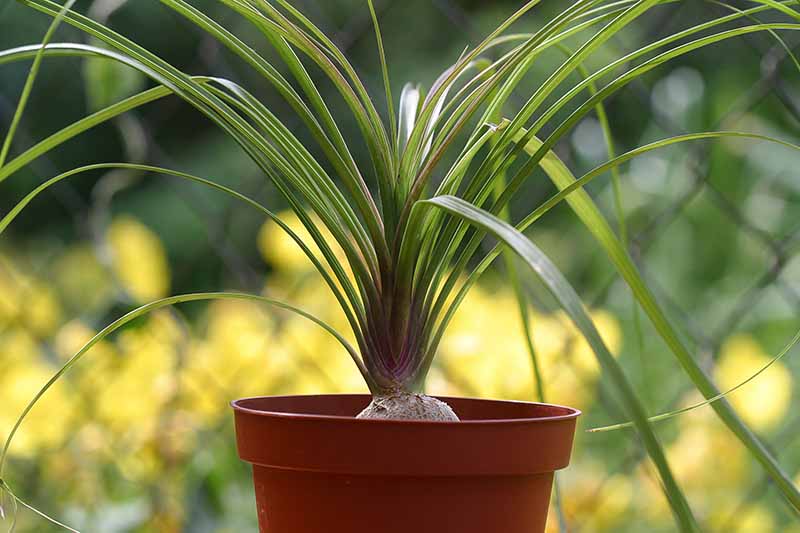
B. recurvata f. variegata has leaves with a green center and a cream-colored margin.
‘Gold Star’ is a cultivar of the variegata form, and it’s particularly good for indoor growing because it is compact, and the yellow stripes are extremely vibrant.
Managing Pests and Disease
Fundamentally, you can think of these as houseplants with a unique container.
What do I mean by that? Those common pests and diseases that may impact most houseplants are also the ones you need to watch out for with ponytail palm bonsai.
Insects
I think of these three as the usual suspects when it comes to houseplant pests. Know what to look for and how to control them, and you’ll be well ahead of the game.
Aphids
Where plants thrive, so do aphids. These small sap-sucking insects are seemingly everywhere you look.
While there are numerous different species that may feed on houseplants, the most common one is the green peach aphid (Myzus persicae).
If you notice yellow stippling on the leaves, wilting, or tiny bugs inching along the stems and leaves, it’s time to take action.
The simplest way to address the problem is to spray the leaves, stems, and trunk with a blast of water to knock the bugs loose. You’ll most likely need to do this once a week for a few weeks.
For more details and options for eradicating aphids, check out our guide.
Mealybugs
Mealybugs (family Pseudococcidae), look like waxy little cotton balls hanging out on the stems and leaves. They suck out the juices from your poor bonsai, causing the leaves to turn yellow.
If you see these little jerks on your plant, take swift action before they reproduce to the point where you’re dealing with a proper infestation.
For a small infestation, just dip a cotton swab in isopropyl alcohol and wipe it on each insect. This removes their protective coating, so they’ll be susceptible to the elements and eventually die.
If this is too much work, insecticidal soap is an effective solution.
Use a product like Bonide’s Insecticidal Soap, which is available in 12- or 32-ounce ready-to-use bottles at Arbico Organics.
Spray the leaves (make sure to get the undersides!), branches, and trunk once a week, until the mealybugs are gone.
Spider Mites
Spider mites, particularly the red variety (Tetranychus urticae), love dry, warm conditions – just like ponytail palms do.
These arachnids are itty-bitty, so you might not notice them. What you will see is yellow stippling and/or fine webbing.
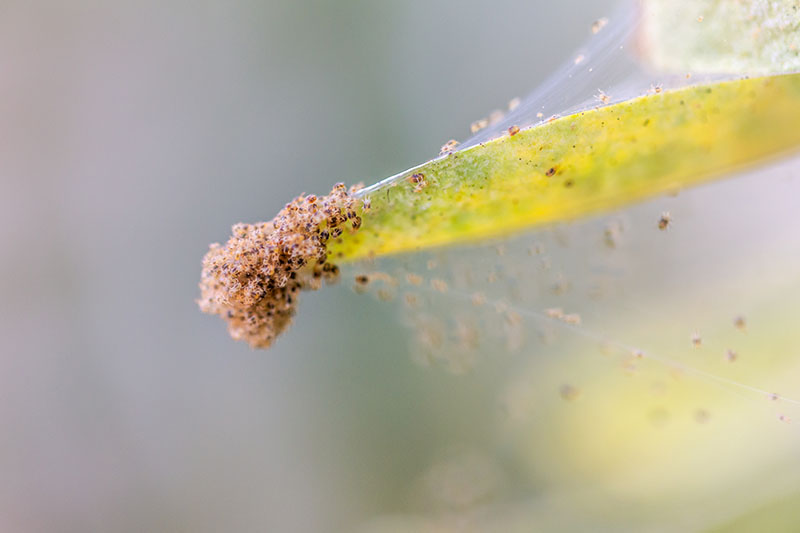
You can attack these the same way you would aphids. Spray the bugs off with a blast of water, and break out the insecticidal soap if necessary.
Learn more about how to eradicate spider mites in our guide.
Disease
Ponytail palms don’t contract diseases too terribly often, but it still pays to know what to watch out for and how to address it.
Bacterial Leaf Streak
Bacterial leaf streak is caused by the fungus Xanthomonas vasicola, and it is aptly named. When it is present, the leaves of the plant will develop long streaks of dry, brown lesions with yellow halos.
Fortunately, it’s pretty uncommon. Unfortunately, there isn’t an effective treatment available. You can try pruning away infected leaves, but you’ll most likely just have to toss the plant and start over.
Stem and Root Rot
If your plant is going to come down with a disease, this is probably the one. It’s caused by overwatering, which smothers the roots, and causes the roots and base to start to rot.
Often, once you notice the problem, it’s too late. The trunk may be rotting from the inside already, and the roots might be a mushy mess.
If you ever touch the caudex and it feels mushy, you need to act fast.
Remove the plant from its container and trim away any dead or mushy roots, then repot in fresh soil. Now, reduce your watering by half.
You should always err on the side of giving too little water rather than too much with this plant.
Ponytail Palms Make a Dramatic Statement
If you want a bonsai that can make a big statement in the home, you can’t go wrong with ponytail palms.
The fact that they are so easy to care for and lend themselves so nicely to growing as bonsai is just an added bonus.
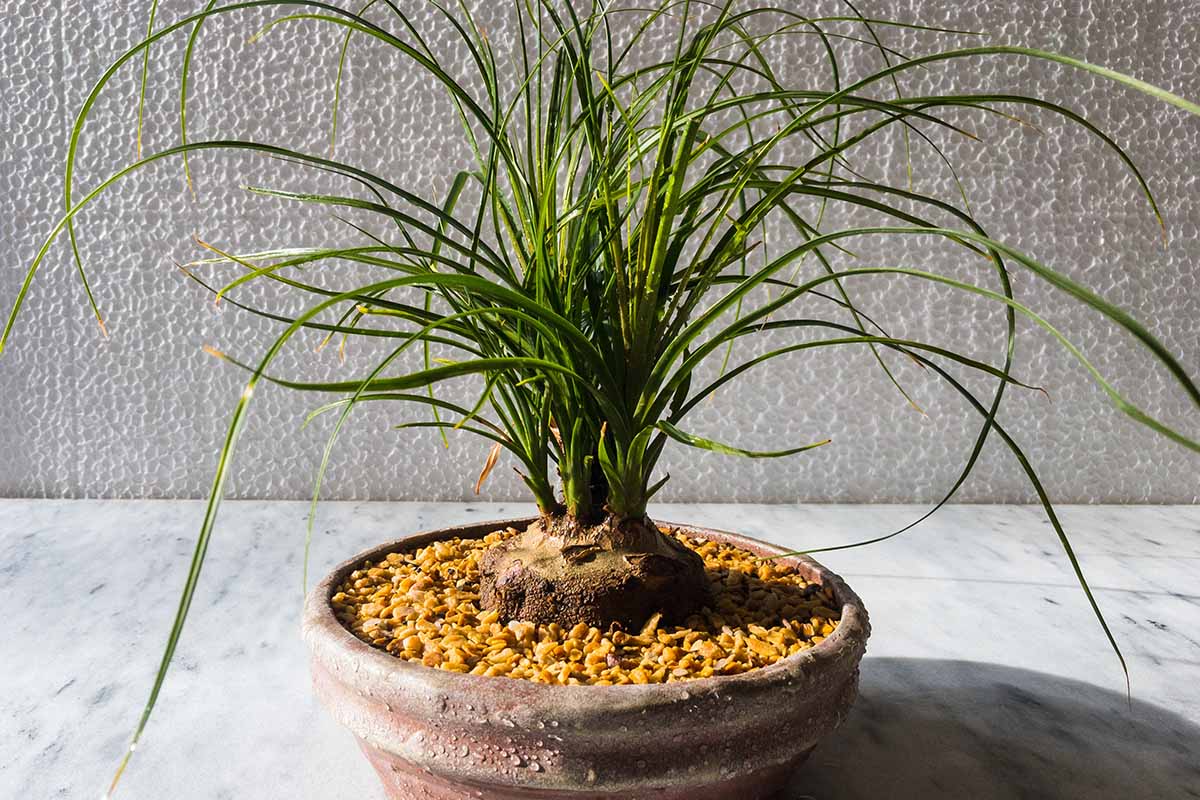
We love to hear about your growing adventures. Let us know in the comments about what kind of ponytail palm you end up with.
If you can’t get enough of the art of bonsai, we have a few other guides that you might want to check out next, starting with these:




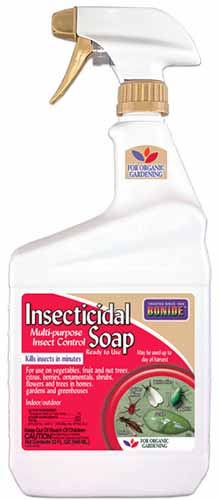
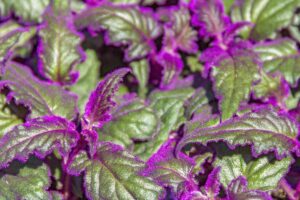

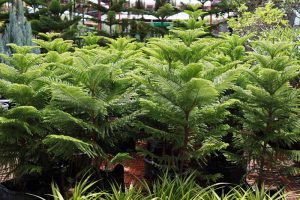
I have had my Bonsai Ponytail Plant for right at 25 years and I have never repotted it. I guess it is time to do so. I found your article very interesting and informative. Should I remove the pups?
Beautiful ponytail palm! No need to repot it, but it certainly couldn’t hurt to remove the old soil and give it some new soil. It couldn’t hurt to remove the pups, either, though that’s a matter of preference. Feel free to leave them, though most bonsai artisans think it detracts from the overall look of the plant.
Hello, I have a Pony Tail Palm, over 5yo. It has 3 “pups” but only one has flourished. The other two are dry. Can i cut those out and see it they regrow? I dont want to endanger the rest of the plant if it doesnt work out. Thoughts?
My 2 metre pony tail palm self seeded and is now also throwing new shoots off its main trunk.
Can I do anything with these shoots (bonsai or plant them)?
Hi David, you can certainly remove these pups and plant them or train them as bonsai. Try to wait until the pups are a few inches tall and then place them in a well-draining potting mix. Keep the mix moist and place the pups in an area with bright, indirect light. They should develop roots within a few weeks or months and you can use them however you see fit at that point.